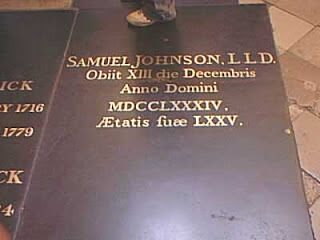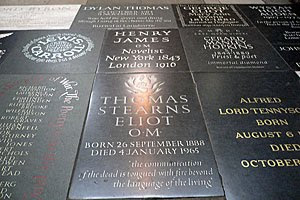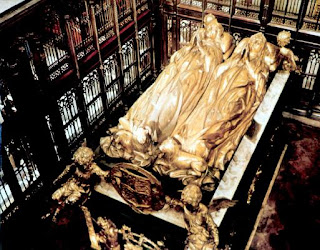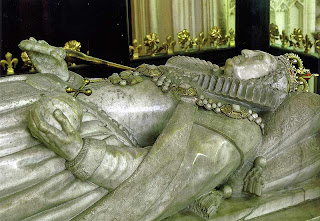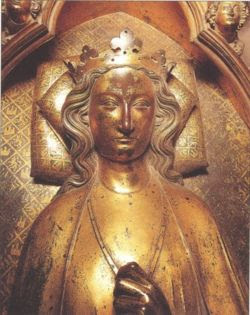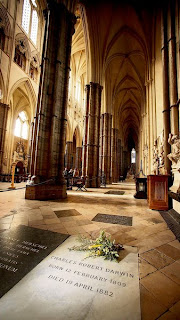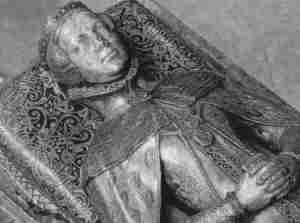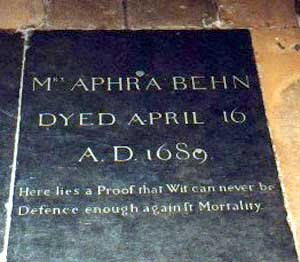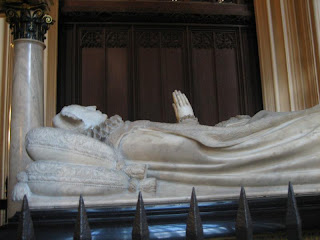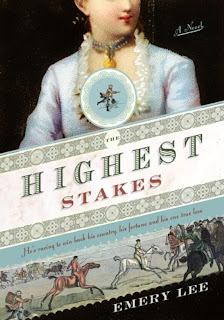I’ve been doing a lot of baking lately which has included experimenting with different butters. I can represent to you-all that the butter makes a difference. Irish butter, for example, results in a denser texture while our locally made butter produced a lighter, fluffier texture and a more delicate taste, too. It so happens I live in an area that’s fairly famous for the quality of its dairy products, so I’m lucky. Butter that’s not from our local dairies or that is otherwise mass-produced tends to be pretty dull, I’m sorry to say. The Danish butter, Lur-Pak, which is available here is also a very good butter.
From the New Family Receipt Book, 1815.
237. Improved Method of making Butter.
If the dairy consist of three or four cows they should be milked in summer thrice a day; in the morning, at noon, and in the evening. Each milking must be kept by itself, in flat wooden vessels, to cool in like manner ; and thus in succession for two or three days, according to the temperature of the air, the milk thickening, and thence is fit for churning, soonest in the warmest weather. The quantity of butter will be generally in the proportion of a pound (twenty-two ounces) for each ten pints, or five English gallons of milk. In winter the cows are to be milked only twice a day, and the milk is to be put into the churn warm from the cow, where it must stand a day or two longer than in summer before it becomes sufficiently thick; although to promote the coagulation, it is sometimes brought near the kitchen fire, particularly on the preceding night before it is churned; and in intense cold, it will be necessary to add a small quantity of boiling water. The operation of churning is performed with the plunge churn, from two or three hours, for thirty or forty pints of milk; and at the last stage of the process a little cold water thrown in has the effect of promoting the separation of the butter from the milk, and making it twice a day: and even before the cloth is taken off, the top and bottom are well rubbed every day.
N.B. The dairy-maid must not be disheartened if she does not succeed perfectly in her first attempt.
So, interesting things here. Number one, that poor dairy-maid! Churning butter twice a day for 2-3 hours each time? Talk about your upper arm strength. And my goodness but that’s 4-6 hours of work right there. I’m guessing that dairy-maid was responsible for more than churning butter. We ended up with organized labor for a reason, folks.
What’s with the 22 ounces in a pound? (There are 16 ounces today) And ten pints in 5 gallons of milk? (There are 8 pints in a gallon, so what quantities is he talking about if his ten pints equals 5 English gallons? By his calculations, that would be 2 pints to the English gallon)
A little Googling proved fascinating: English Wine Gallon. Today we don’t think about the consequences of accurate measures too much, because we have them. But in the day, England taxed wine, for example, by the gallon. There darn well better be an agreed upon definition of a gallon — which by the way, involves using pi since they needed the circumference and then the volume of a container plus the temperature of the room. And it turns out that the definition was a bit loosey-goosey. Merchants got a pit peeved to discover they’d been overpaying their tax.
And then I found This Page over at Wikipedia. Oh my God. This page is heaven for history geeks. There’s a FLOW CHART! A league is three miles, and that is information I have long wished to know.
All right, so I got a little off topic, kind of, but there’s a quite dramatic entry following the butter advice one, included below for your pleasure. One puzzle, though, is that this penultimate phrase of the first paragraph, they discover the secret, What the heck does that mean? Does anyone have a guess? Opine in the comments, please. I understand that he’s saying a slattern will not keep the wooden dishes clean enough, but grammatically how does discovering a secret work into that? The secret of good butter? The secret of life? What?
238. Dr. Anderson’s Method of keeping Milk and Butter
The pernicious method of keeping milk in leaden vessels, and salting butter in stone jars, begins to gain ground in this country, as well as elsewhere, from an idea of cleanliness. The fact is, it is just the reverse of cleanliness ; for in the hands of a careful person, nothing can be more cleanly than wooden dishes, but under the management of a slattern, they discover the secret, which stone dishes do not.In return, these latter communicate to the butter and the milk, which has been kept in them, a poisonous quality, which inevitably proves destructive to the human constitution. To the prevalence of this practice, I have no doubt (says the doctor) we must attribute the frequency of palsies, which begin to so much prevail in this kingdom ; for the well-known effect of the poison of lead is, bodily debility, palsy — death!
Death by butter. Now that’s a turn of phrase.



